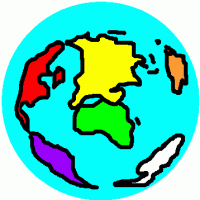メッセージ: 14
言語: Esperanto
Metsis (プロフィールを表示) 2017年9月28日 11:03:06
Second, it's true that before WWI many countries were on gold standard. That war ruined the system to a degree. WWII ruined it completely, as the majority of world's gold were in banks in USA (hey, guess what was used to pay all the warmaterials and guess where a big part of them were manufactured). There was no point to keep calculating in gold as nobody else except USA had it. So, one used dollars from USA instead. But the economics changed and starting from 1970's the US dollar has not had that position. Don't misunderstand this, the US dollar is still nominally used in many international transactions but its value is no more based on how much gold or silver there is the US bank vaults. The value is based on how good or bad the economics run in USA (high or low conjuncture etc.) and that in relation to other countries' economics. The same as almost every country's money, the US dollar is now a "mere mortal". So, on what to base a new currency? Is there some Esperanto production that could serve as value base?
Third, the need for physical money is rapidly declining, it's more and more electronic now. There are already countries where only small purchases, like a cup of coffee, can be paid in cash. Any bigger sums are paid electronically. Heck, for the most time I have only coins worth of two to three euros in my wallet and I don't use them. I just used my bank card to buy a sandwich, 1,95 €.
Last and perhaps the heaviest argument is, as has been pointed out what purpose any new currency would serve.
sudanglo (プロフィールを表示) 2017年9月28日 11:30:02
Roch:I would see it as a hypothetical money, in order to simplified the understanding. To eventually know the value of something expressed in $, €, £, ¥ etcAbsolutely. In the Europe of 1907 there would have been a dozen or more different currencies.
The number of different possible exchange rates grows very rapidly with the number of currencies.
[The formula is something like 2(n-1)+2(n-2)+2(n-3) etc.. where n= no of currencies. I Ieave it to the mathematicians to express that more elegantly.]
Much simpler if all Esperanto associations quoted the prices for their books, products subscriptions etc in spesmiloj. Then you just have to remember how many spesmiloj equal your own money.
Altebrilas (プロフィールを表示) 2017年9月29日 22:23:49
n*(n-1), the number of ratios to convert each of the n currencies into the (n-1) others.
It is the same formula as for the pairs of languages (i.e. of interpreters) in a complete translation system. This formula is well known by esperantists...
sudanglo (プロフィールを表示) 2017年10月12日 10:53:52
Now it often happened that coins containing silver had a face value much higher than their silver content worth. But then the countries in which those coins were used had laws, and a police force, that protected the inhabitants against forgers producing their own coins.
Obviously Esperantujo isn't in that position. So what would stop a 'malbonulo' forging the new 100-Stelo coin?
Actually, it now seems to me a puzzle as to why the Spesmilo with its tight and practical definition in terms of a specific weight in gold was abandoned in favour of the Stelo. Anybody know the answer to that?


